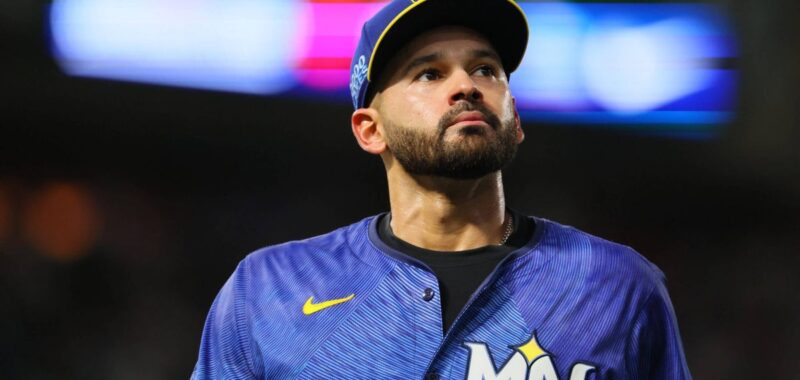MINNEAPOLIS — Six weeks ago, the Minnesota Twins had the American League’s fourth-best record at 70-53, with playoff odds around 90 percent.
What followed has been arguably the biggest collapse in team history, with the Twins free-falling out of the playoff picture and being officially eliminated Friday night with two games remaining in the season.
Instead of spending this weekend scoreboard watching for playoff seeding, debating their October roster decisions and trying to avoid getting sprayed with champagne in the clubhouse, here’s a much earlier than expected look at three big-picture offseason questions facing the Twins.
Who will take the fall?
This will almost certainly be the first major question answered, perhaps as soon as Monday.
There’s no shortage of blame to spread around. To get to this point required letdowns from nearly every aspect of the Twins, from the players and coaching staff on the field to the front office and upper management off the field. But the reality is regardless of how much blame the billionaires who own the Twins deserve, there’s no mechanism for anyone to fire them.
Executive chair Joe Pohlad, and the rest of the Pohlad family’s ownership group, would need to be the ones doing the firing if longtime team president Dave St. Peter were let go from the job he’s held running the business side of the organization since 2002. That seems unlikely despite the team’s alleged monetary losses and ongoing television contract drama.
St. Peter’s counterpart handling the on-field product, president of baseball operations Derek Falvey, also appears unlikely to be fired from the position he’s held since 2017. And manager Rocco Baldelli, who falls under Falvey’s purview after being hand-picked by him to lead the dugout in 2019, is widely perceived to be safe as well.
But it’s expected that changes are coming, with several high-ranking members of the front office and coaching staff potentially in jeopardy. This team was too bad for too long, and on too many fronts, to think they could avoid that, regardless of whether the names involved satiate the angriest segment of the fan base.
Is the payroll dropping again?
Shortly after last season’s playoff run ended, Twins officials indicated the payroll would drop in 2024, putting in motion the step-by-step dismantling of roster quality and fan morale culminating in this mess 10 months later.
Slashing payroll by $30 million directly led to the front office’s low-wattage and largely unsuccessful offseason moves, as well as a trade deadline that provided zero help. While it would be nice — and some might argue, smart and logical — for ownership to recognize the damage they did and reverse course with a payroll increase to 2023 levels, that’s wishful thinking.
Revenues are well short of the team’s internal projections because Target Field attendance is about 300,000 lower than they hoped, the TV situation hasn’t improved and there won’t be any money from playoff games. If the Twins were willing to wreck last season’s goodwill and fan excitement over $30 million, it stands to reason more cuts could be coming.
Barring a shocking change of direction, and heart, by ownership, the best fans can probably hope for is a similar payroll for 2025. That would equal around $130 million to spend, leaving the front office with little wiggle room given the current roster — with guaranteed contracts, arbitration raises and free-agent departures — is projected to make at least $125 million as is.
That may mean any sizable salaries being added would require comparable salaries being shed, either via non-tendering arbitration-eligible players or trading veterans. And if the Twins do as many fans no doubt fear, and lower payroll even further, then the front office may be forced to shed salaries just to get under their new self-imposed limitations.
Which core players could be moved?
This is where the payroll question leads to real consequences. If the front office is given $130 million to work with again, and especially if ownership forces them to cut payroll further, core veterans are the likely casualties.
There aren’t many methods to shed major payroll, because the Twins have only five players guaranteed more than $5 million in 2025. Carlos Correa ($37.33 million), Pablo López ($21.75 million), Byron Buxton ($15.1 million), Christian Vázquez ($10 million) and Chris Paddack ($7.5 million) are owed a combined $91.7 million, and Correa and Buxton have no-trade clauses.
Max Kepler ($10 million), Kyle Farmer ($6 million), Carlos Santana ($5.25 million), Manuel Margot ($4 million) and Anthony DeSclafani ($4 million) will be coming off the books as free agents, but that’s already accounted for in 2025 projections. And none of the many arbitration-eligible players (such as Joe Ryan, Bailey Ober and Willi Castro) are in line for huge raises yet.
All of which seemingly points to Vázquez and Paddack as the most logical veterans to be on the move for payroll-trimming purposes, and it’s possible the Twins would have to eat some money to facilitate a deal. Still, the Twins have Ryan Jeffers to catch and Simeon Woods Richardson, Zebby Matthews and David Festa have emerged as minimum-salaried rotation options.
Another possibility, not driven by payroll, is the Twins trading inexpensive young players to reshape the core. Ober, Ryan and Jhoan Duran will draw strong interest if shopped, and the Twins’ infield depth surrounding Correa could make one or more of Royce Lewis, Brooks Lee, Edouard Julien, Jose Miranda and top-100 prospect Luke Keaschall available for the right price.
(Photo of Pablo López: Adam Bettcher / Getty Images)

